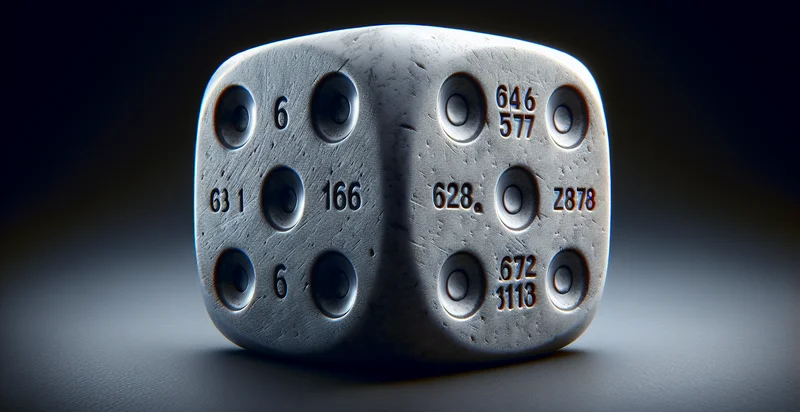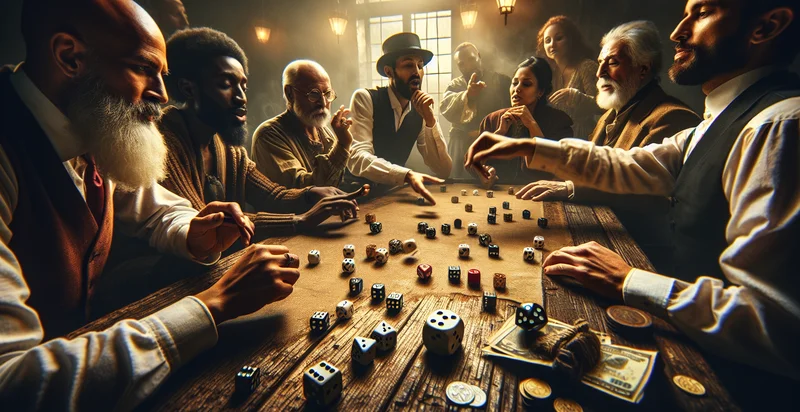Identify what material a dice is made from
using AI
Below is a free classifier to identify what material a dice is made from. Just upload your image, and our AI will predict what material a die is made from - in just seconds.

Contact us for API access
Or, use Nyckel to build highly-accurate custom classifiers in just minutes. No PhD required.
Get started
import nyckel
credentials = nyckel.Credentials("YOUR_CLIENT_ID", "YOUR_CLIENT_SECRET")
nyckel.invoke("what-material-a-dice-is-made-from", "your_image_url", credentials)
fetch('https://www.nyckel.com/v1/functions/what-material-a-dice-is-made-from/invoke', {
method: 'POST',
headers: {
'Authorization': 'Bearer ' + 'YOUR_BEARER_TOKEN',
'Content-Type': 'application/json',
},
body: JSON.stringify(
{"data": "your_image_url"}
)
})
.then(response => response.json())
.then(data => console.log(data));
curl -X POST \
-H "Content-Type: application/json" \
-H "Authorization: Bearer YOUR_BEARER_TOKEN" \
-d '{"data": "your_image_url"}' \
https://www.nyckel.com/v1/functions/what-material-a-dice-is-made-from/invoke
How this classifier works
To start, upload your image. Our AI tool will then predict what material a die is made from.
This pretrained image model uses a Nyckel-created dataset and has 20 labels, including 3D Printed, Acrylic, Aluminum, Bone, Ceramic, Copper, Crystal, Fabric, Foam and Glass.
We'll also show a confidence score (the higher the number, the more confident the AI model is around what material a die is made from).
Whether you're just curious or building what material a dice is made from detection into your application, we hope our classifier proves helpful.
Related Classifiers
Need to identify what material a dice is made from at scale?
Get API or Zapier access to this classifier for free. It's perfect for:
- Quality Control in Manufacturing: This function can be integrated into a quality control system for dice manufacturers. By identifying the material composition of produced dice, manufacturers can ensure that only high-quality materials are used, reducing the risk of product defects.
- Game Development Validation: Game developers can use this function to verify the authenticity of dice used in their games. By ensuring that the dice are made from specified materials, they can uphold the quality and integrity of their gaming products.
- Auction and Collectible Verification: Auction houses can employ this classification function to authenticate collectible dice. By accurately identifying the material, they can provide bidders with reliable information about the items’ value and provenance.
- Educational Tools for Chemistry: Educational institutions can utilize this function as a practical teaching tool for chemistry classes. Students can learn about material properties and identification through hands-on experiments with various dice materials.
- E-commerce Product Listings: E-commerce platforms can enhance their product listings by incorporating this function for dice sold online. Accurate material identification will help customers make informed purchasing decisions and reduce returns caused by misunderstandings about product specifications.
- Board Game Resource Allocation: Board game companies can optimize inventory and resource allocation by analyzing the material of the dice used in their games. This data can guide them in sourcing appropriate materials for future game productions.
- Hobbyist Customization Services: Companies offering customizable dice can use this function to ascertain the materials chosen by clients. By ensuring they accurately identify materials, they can better serve hobbyists looking for specific aesthetics and weight characteristics in their customized dice.


